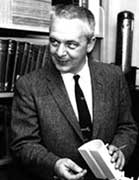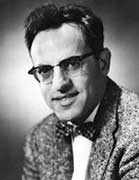Savannah River Site
Aiken, South Carolina
Discovery of the Neutrino
The neutrino is a tricky little ghost of a particle. It has no charge and little or no mass, and it has been around since the Big Bang. “Large numbers of these primordial low-energy neutrinos remain in the universe today because they interact very weakly with matter. Indeed every cubic centimeter of space contains about 300 of these uncharged relics.”i In addition, neutrinos are copiously produced in the fusion reactions taking place in the interiors of stars. They are also created as the result of other nuclear reactions, for example when cosmic rays strike the molecules in the upper atmosphere of the Earth.
Neutrinos usually mind their own business, constantly passing through our planet and other solid celestial objects, with little pomp and circumstance. According to the Hollywood mega-disaster film “2012”, there is always the chance that they could somehow begin to interact with matter, and more specifically cause Earth’s core to boil, thus leading to the ultimate destruction of the planet, but, fortunately, physicists confirm that one can stop worrying because this is total nonsense.
But what is not nonsense was the discovery and first detection of the neutrino, which took place at the Savannah River Site in South Carolina in 1956 by Frederick Reines and Clyde L. Cowan, Jr. During the APS April Meeting in 2014, APS President Malcolm Beasley presented a plaque to Doug Hintze, acting chief financial officer of the Savannah River Site, in recognition of the Site’s role in proving the existence of and ultimately discovering the elusive neutrino. The citation reads: “In 1956 Clyde Cowan and Frederick Reines used the flux from P Reactor at the Savannah River site to perform the first experiment that conclusively detected the neutrino, thereby establishing the existence of the particle postulated 26 years earlier by Wolfgang Pauli to explain the apparent lack of conservation of energy in beta decay."
Beta decay is the process by which a nucleus can change its charge by one unit, emitting an electron as it does so. In 1930, Wolfgang Pauli suggested that the apparent violation of energy and angular momentum conservation in this process could be explained if it involved the emission, along with the electron, of another light, weakly interacting, spin one half, electrically neutral particle. He called this particle the neutron, but with the discovery of the particle now known as the neutron in 1932, Pauli’s hypothetical particle was re-named the neutrino by Enrico Fermi, who used it to construct his successful phenomenological theory of beta decay.
More than twenty years later, Clyde Cowan, Jr. and Frederick Reines, then at Los Alamos, conceived a plan to detect the neutrino experimentally. Their idea was to use the immense flux of neutrinos produced by H-bomb tests, and they even designed an apparatus that might have been capable of getting close enough to the test site to detect neutrinos, and yet be sufficiently well shielded from the other effects of the blast that it would remain intact.
However, they were dissuaded from this slightly loony scheme by the suggestion of Los Alamos physics division head J. M. B. Kellogg, that they should use a nuclear reactor instead. Nuclear reactors were then in their early stages of commercial development, so this was not as obvious an idea as it might seem now.
Cowan and Reines first conducted their experiment at the Hanford Site in Washington State, where they obtained some preliminary results. The definitive experiment, however, was conducted in early 1956 at P Reactor at the Savannah River Plant near Aiken, South Carolina, where they had better shielding against cosmic rays.
The flux of neutrinos at their apparatus was in excess of 1013 per second per centimeter squared. They used two tanks of water, of about 200 liters each, in which they looked for the reaction
Antineutrino + proton → positron + neutron
by detecting the pair of 511 keV gamma rays emitted when the positron annihilated with an electron. In order to reduce their background, they also detected the neutron, by dissolving about 40 kg of Cadmium chloride in each tank. The neutron reacts with a Cadmium (108) nucleus to produce Cadmium (109) and a gamma ray. So their signal was a pair of gamma rays, followed in a few microseconds by another gamma ray from the Cadmium absorption of the neutron. They also took data with the reactor shut off, to make sure that the signal went away.
Their counting rate varied between one and three events per hour, and they ran for a total of 1371 hours (including time with the reactor off). Their measured cross section was consistent with the predictions of Fermi’s theory. The “ghost” had been detected.
Frederick Reines was recognized by the Nobel Prize in 1995 for this work. Clyde Cowan, who would undoubtedly have shared the Prize, had died in 1974.
i “Neutrino History, Berkeley Center for Theoretical Physics, http://ctp.berkeley.edu/neutrino/neutrino.html


Clyde Cowan (left) and Frederick Reines (right)
